#Java Displays
Explore tagged Tumblr posts
Text
this is the quadrillionth time i have changed my name
2 notes
·
View notes
Text
Hello audience. Unfortunately, I am still on my break. However, I am happy to announce that I am still alive and kicking. In fact, I decided to make use of my unemployment and revisit HTML, CSS, and JavaScript to create... A visual novel.
Good News: code is 100% reusable because I used a JSON (i do not know how that works, someone can kindly explain to me...)
Bad News: this code sucks ass, and NOTHING works except playing the story. Transitions? Doesn't work. UI/UX? Ass. Effects? Hell no... Also, 70% of the features aren't present yet I'm gonna do it later.
Oh, this is CrossDust, if you can't tell.
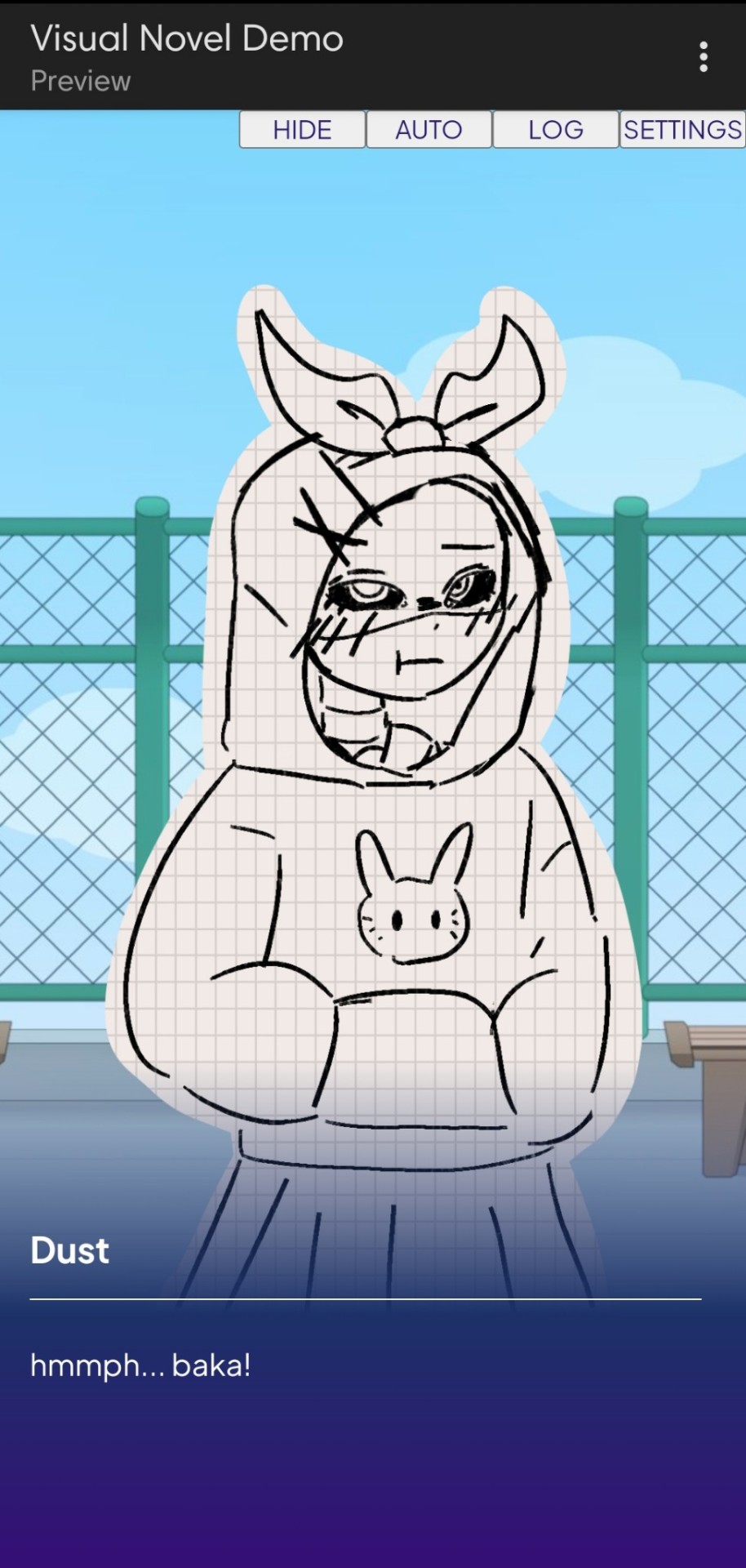

Dust Sans by Ask-Dusttale, Cross Sans by Jakei
I'm gonna respond to asks and do requests later (After my break is over). This is just a small update teehee.
#dsevalyappuccino#TIME TO GO INSANE IN THE TAGS!!#i hate css#i still hate css#css hell no#guys why is css so hard. ive literally been doing this for months and css is still hard#i was about to use css spritesheets for the sprites and emotions#but my ass gave up and instead i just use seperate images#GUYS!!! DISPLAY: FLEX 💪. DISPLAY: GRID?!?!#javascript i hate you tooq#i hate java script naurrrr#what do you mean DOM objects#what do YOU MEAN#also i do not understand error handling and JSON integrations#papaGPT doesn't explain anything#i don't know what I just wrote#coding???????????#kids don't be unemployed#actually maybe if you're unemployed but still making money that's great#also the sprites are just for testing purposes im probably gonna make new better ones if i chose to expand this into#a full blown anime high school visual novel project#i don't wanna think of all that story crap but then again i can just write the cringiest thing on earth
23 notes
·
View notes
Text
Forgive me creator for i have sinned(installef GNOME).
#an old minecraft modpack i tried to run would not display properly and refused to use a newer version of java so i needed an#xorg window manage. but i did not want to spend time getting familiar with a new one so GNOME it was.
9 notes
·
View notes
Text
hand to forehead. bracing inhale. LOS endearing as always
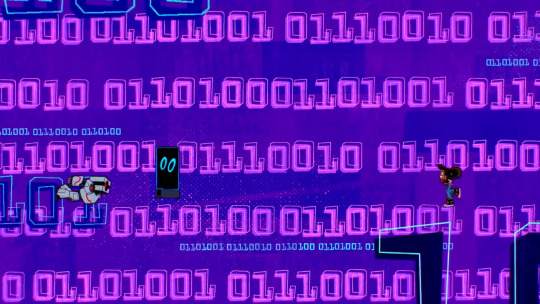
look at their little Two Eyes expressive display format

look at their little ‼️😰 expressive display format

everybody outta the way look at their HEART 💙 !!! well i 💙 them sm so amped
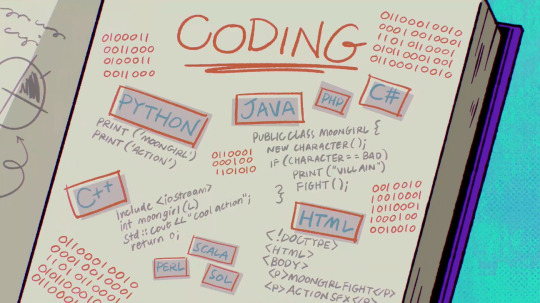
p.s. fun to put joke coding but showing different languages' formats
#💙 them sm. so amped about LOS so true bestie#''cool action'';#wish i knew more (abt) coding fr. spent a few weeks in a java class. do enjoy languages; processes; getting creative ft. tools/parameters#LOS-307#great as usual that their display screen is made so Vivacious whilest they are otherwise. a prism. person standing emoji#and that sometimes their expressiveness is in Symbols sometimes its more so in Movement perhaps along w/their voice#think the Their Default / Main Circle separating into [kind of like two eyes] only otherwise happens when Oops Dying. Like A Human Being...#what a gift they are. kicking my legs. such a delight & we can't have it all (like if they sang a line lol) but we have a lot#was going now where are they in Recurring Roles on this wikipedia page b/c that's Rarer vs. one time guest VA but they're thusly; bless....#answer is who put them under villains. technically but c'mon. & who says they can't be in multiple categories#everywhere i look the data is noncomprehensive / not granular enough lol. c c c c'mon#alright wait fine i'll check if the binary means anything for the title card with coding jokes....#[person w/slow laptop & an unresponsive [numeral one] key usually incl now voice] okay going the No (Discernible To Me) Meaning route
4 notes
·
View notes
Text
impulsively ordered a new pair of boots bc i saw shoefreaks had a pair of demonias on clearance sale in my size (!) and like. do i need another pair of platform boots? absolutely not and these weren't even on my wishlist but fuckit they're cool and at the moment i need every tiny shred of Something Good To Look Forward To after wrestling with my godforsaken java assignment for hours and getting absolutely fucking nowhere. the Death And Doom And Perpetual Academic and Professional and Personal Failure Spiral is real folks and if some 5" platform heels are what puts the brakes on said spiral in2 the Bottomless Pit of Despair well then so be it
#honestly the clearance markoff is only 35% but when reg price is over $200 that shit makes a difference#thank GOD for shoefreaks........ free domestic shipping..... in CANADA 😭#anyways theyre the demonia camel-300#probably gonna wear em to tge a7x concert this month assuming they get here on time#might wear my white pleaser boots 2 the grandson concert tho bc why not right? gotta wear em sometime#hnngngnnnng too stressed 2 sleep knowing my java assignment is a verified shitshow and i just str8 up dont know how 2 fix it. at all#i am..... fuckèd. :|#theres nothing i can do about so i may as well sleep! bc its almost 3 am! but the stress! AHHHHHHH#kill me#gonna bus 1.5 hours 2 campus tmrw. demo my assignment aka display the stunning variety of 5xx errors i get in lieu of actual functionality#while trying to not combust from the shame of Being A FailureTM then turn around bus 1.5 hours back home#and . god and adhd willing. start working on my next java lab. bc its due sunday. and i haven't even looked at it#and lord knows i Can Not ask for an extension after the trashfire that has been this last assignment.#i hate college#no 1 even THINK the word python at me idek what im gonna do abt that but ots not due til the 23rd#i feel cautiously tentatively flinchingly optimistic that i might be able 2 figure it out. but only bc i havent worked on it for over a week
3 notes
·
View notes
Text
I find it really funny how, because all of my experience in Java is solely from doing Minecraft Origins datapacks, I literally don't know a single one of its base functions.
#I don't code in java I code in the origins language /j#I've coded dozens of powers in origins#but I couldn't tell you the function in java to display text#in rayne's world
1 note
·
View note
Text
There's a vscode extension pack for java, it's called… Extension Pack for Java.
It lets you create and debug java projects:

do i have to use intellij. this sucks. give me back vscode
#vscode#java#with this you'll have no Idea#it even displays names for some of the params in callbacks like in intelliJ
52 notes
·
View notes
Text
Muppet Fact #1218
The original Java Muppets from 1965 are on display at the Museum of the Moving Image in Astoria, Queens.

Source:
Museum of the Moving Image. The Jim Henson Exhibition. Java Muppet. https://movingimage.org/event/the-jim-henson-exhibition/.
#muppet facts oc#jim henson#the muppets#muppets#muppet facts#fun facts#Museum of the Moving Image#The Jim Henson Exhibition#java Muppet
148 notes
·
View notes
Text
Ok, I’ve delved into Twine Sugarcube a little and I’ve had some revelations I feel the need to share.
1. Sugarcube is the devil. I mean that in the nicest way possible. I thought I was coding before… nope! I’m going to learn it anyway because the breadth of stuff I can do is amazing and worth it, but holy hells is this hard. Which leads me to number 2…
2. My fellow IF authors who use Sugarcube, you are now like gods to me. Massive respect for you. 👊 Seriously, the time and effort it takes to create a story in this, and to do it so seamlessly as many of you do, is mind boggling.
3. I don’t feel I’ve given enough credit to Chapbook. You’ve seen me talk about the lack of a save system. But for a shorter story like Viatica (currently at 155k words with Rebellion ending and coding) I don’t feel it’s a massive deal breaker. It also has no easy way to display stats or inventory or a codex. I had to jerry rig my own stats passage.
But what it does well, it does exceptionally well. Chapbook is a complete out-of-the-box format and requires no previous CSS or HTML experience. It automatically formats everything for you, headers, footers, the adaptability to be read on any device, it’s all there. There is no style sheet to create, no Java script. The biggest challenge is coding choices and variables, but even then Chapbook comes with an easy to read guide that spells out everything you can possibly need. I would also be happy to answer questions or share screenshots of what I’ve done. If you’ve been wanting to try your hand at IFs but the idea of coding is daunting, you can use Chapbook. If you want to focus on the writing, your craft, and don’t have the time or inclination to heavily code, you can use Chapbook. If you’ve never coded a damn thing in your life and think CSS stands for “can’t style shit”, YOU CAN USE CHAPBOOK!
In conclusion, Sugarcube is evil incarnate, but I’m going to learn it anyway. Hail, Satan. Chapbook is mercy incarnate. Thank you, my lord and savior. And if you’re a newcomer and on the fence at all, I encourage you to give Chapbook a try. Say it with me… you can do it. 🤗
79 notes
·
View notes
Text
The History of Petrified Wood in Indonesia
Indonesia, an archipelago rich in geological and cultural history, is home to some of the most fascinating petrified wood deposits in the world. The country's unique geological conditions have created an environment conducive to the formation of these remarkable fossils. Here's a closer look at the history and significance of petrified wood in Indonesia. Sell Petrified wood in etsy
#### Geological Background
Indonesia's location along the Pacific Ring of Fire, an area with significant volcanic activity, provides the ideal conditions for the formation of petrified wood. Volcanic eruptions, earthquakes, and the resulting sediment deposits have played a crucial role in the creation of petrified wood. Over millions of years, trees buried by volcanic ash and other sediments have undergone permineralization, resulting in the beautiful stone fossils we see today.
#### Discovery and Early Uses
The discovery of petrified wood in Indonesia dates back to ancient times, with locals finding and using these stone-like pieces in various ways. Early communities may have used petrified wood for tools, ornaments, and ceremonial objects, appreciating its durability and unique appearance.
In modern times, particularly in the 20th century, the commercial and scientific interest in petrified wood increased. Local artisans began to recognize the aesthetic and economic value of petrified wood, crafting it into jewelry, furniture, and decorative items. This trade provided a source of income for many communities and helped put Indonesian petrified wood on the global map.
#### Notable Sites
Several regions in Indonesia are renowned for their petrified wood deposits, each with its unique characteristics:
- **Banten**: Located in western Java, Banten is famous for its high-quality petrified wood. The area has yielded numerous large and well-preserved specimens, attracting both scientists and collectors. SELL ON ETSY
- **Sumatra**: The island of Sumatra, particularly the regions around Jambi and West Sumatra, has significant deposits of petrified wood. The fossils found here are often characterized by their vibrant colors and intricate patterns.
- **Kalimantan (Borneo)**: Kalimantan is another key area with rich deposits of petrified wood. The region's tropical climate and volcanic activity have contributed to the formation of diverse and well-preserved specimens.
#### Scientific and Cultural Significance
The study of petrified wood in Indonesia provides valuable insights into the region's ancient environments and climatic conditions. By examining these fossils, scientists can reconstruct past landscapes, understand vegetation changes, and gain a better understanding of the geological processes at play.
Culturally, petrified wood holds a special place in Indonesian heritage. It is often used in traditional crafts and modern art, symbolizing the connection between the natural world and human creativity. The trade and display of petrified wood also contribute to local economies, supporting artisanal communities and promoting tourism.
#### Conservation Efforts
As interest in petrified wood has grown, so too have concerns about its conservation. Over-collection and illegal mining can threaten the preservation of these natural treasures. Efforts are being made to regulate the collection and trade of petrified wood, ensuring that these fossils are protected for future generations.
#### Conclusion
Petrified wood in Indonesia is more than just a geological curiosity; it is a testament to the country's rich natural history and cultural heritage. From ancient times to the present day, these stone fossils have captivated the imagination and provided valuable resources for both scientific study and artistic expression. As efforts to conserve and protect petrified wood continue, its legacy will remain a significant part of Indonesia's story. Petrified wood bowl in etsy

#petrified wood#petrified forest national park#adventure#forest#landscape#FossilizedWood Geology NaturalHistory WoodFossil#home decor#winter#minerals#gemstones#arizona#necklace#gemstonejewelry#geology#jewellery#handmadejewelry#ilustración#ilustration
36 notes
·
View notes
Text

Vodafone 904SH (2006) Japan
- 2.4 inches display, TFT, 240 x 320 pixels, 262K colors
- 96 x 16 secondary display, monochrome
- Camera: 3.2 MP
- 3G, bluetooth, infrared (IrDA), built-in GPS receiver
- Pre-installed games, Java support for downloadable games and apps
- Additional memory: microSD slot
- WAP 2.0/xHTML, HTML
#vodafone#flip phone#clam shell#clamshell phone#retro#y2k#2000s#pink core#pink phone#japan#retro tech#wap#old tech#girly
32 notes
·
View notes
Text
also that makea me think....... i should open adobe illustrator again!
1 note
·
View note
Text

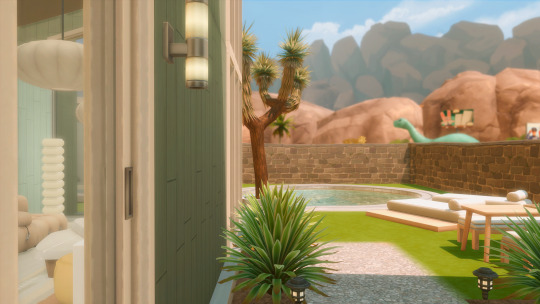
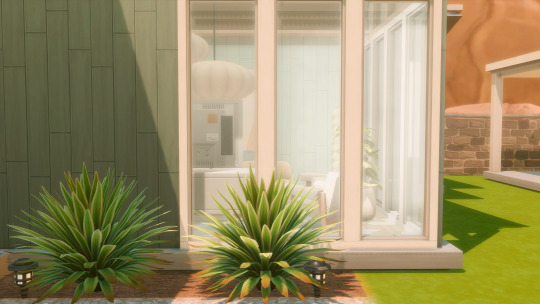
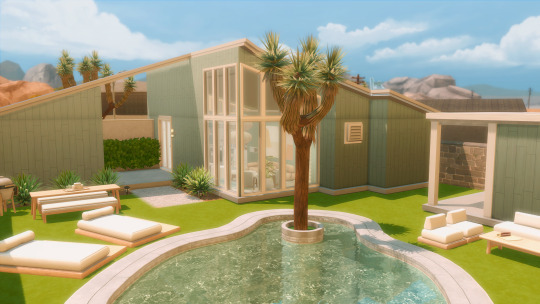


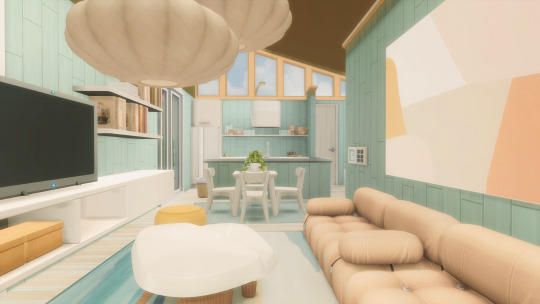




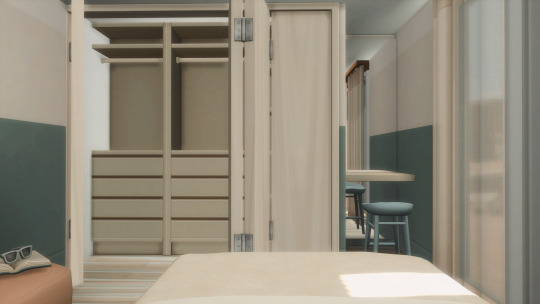

Pebble Burrow
(CC List + Links)
World Map: Oasis Springs
Area: Bedford Strait
Lot Size: 30 x 20
(3-bedroom—4 beds, 2 Bathroom)
Gallery ID: Simstorian-ish
Packs Used
Cats & Dogs
Desert Luxe Kit
Dream Home Decorator
For Rent
Get Together
Get To Work
Growing Together
High School Years
Horse Ranch
Snowy Escape
Spa Day
Strangerville
Build Mode
Harlix – Orjanic Pt. 1 (Sliding Door)
Harrie – Kwatei Pt. 1
LedgerAtelier – Marble Buro Floors
Max20 – Poolside Lounge (Agave)
MrOlkan – Pools
Peacemaker – Vaulted Ranch
Pierisim – Tilable (Used throughout)
Buy Mode
Awingedllama – Apartment Therapy (Floor Plant, Tastefully Lamp)
Awingedllama – Blooming Room (Plant 2)
Awingedllama – Boho Living (Cement Planter, Curvy Lamp, Floor Plant)
BlueTeas – Rivers Bed Blanket
Charly Pancakes – Miscellanea (Books)
ClutterCat – Mellow Moods (Inner Circle Rug)
Felixandre – Grove Pt. 2 (Stacked Bowls, Stacked Plates)
Felixandre – Shop The Look 1 (Hanging Lights, Wooden Table)
Felixandre – Paris Pt. 3 (Coffee Table)
Harlix – Baysic
Harlix – Baysic Bathroom
Harlix – Harluxe (AC Control, Book w Sunglasses, Light Switch)
Harlix – Kichen (Glasses, Tumblers)
Harlix – Livin’ Rum
Harrie – Coastal Pt. 2 (Outdoor Coffee Table)
Harrie – Octave Pt. 4 (Light Switch)
Joyce – Simple Live # 5 (Bathrobe, Shower Gel)
Joyce – Simple Live # 6 (Umbrella Rack)
KiwiSims4 – Blockhouse Bedroom (Floor Lamp)
KKB – Citrus Room (Cushion V1, Paintings)
Meinkatz – Moor Rug
Meinkatz – Superoblong Bed
MyCupofCC – Bathroom Collection (Fluffy Slippers)
Nordica Sims – Art Poster 01
Peacemaker – Bowed Bedroom (Squat Lamp)
Peacemaker – Hinterlands Living (Fringed Pouffe)
Peacemaker – Hudson Bathroom (Portal Mirror)
Peacemaker –Kassova Sectional
Peacemaker – Kitayama Bedroom (Smaller Zen Table)
Peacemaker – Matilda Mudroom (Beanie on Hook, Knit on Hook)
Peacemaker – Over the Rainbow (Pencil Tin)
Pierisim – David’s Apartment Kitchen (Fridge, Sinks, Stove)
Pierisim – David’s Apartment Pt. 2 (Nightstand, Double + Single Bed Frame)
Pierisim – Domaine Du Clos Pt. 3 (Single Bedding)
Pierisim – MCM Pt. 1 (Books, Simstudio Display)
Pierisim – MCM Pt. 3 (Narrow Rug,)
Pierisim – MCM Pt. 4 (Kitchen Counters + Island + Shelves)
Pierisim – MCM Pt. 5 (Double Bedding, Plain Rug)
Pierisim – Oak House Pt. 1 (Sideboard)
Pierisim – Tidying Up (Shelf)
S-imagination – Oak & Concrete Patio (Round Grill)
Simplistic – Indigo Art Prints
SixamCC – Life in Plastic (Bar Chair)
SixamCC – Small Spaces (Desk Calendar)
Sundays – Java Pt. 1 (Throw Blanket)
Sundays – Keidri Pt. 1 (Throw Pillow Prints + Solids)
Sundays –Keramas Pt. 1, 3, 5 (Daybed Single, Living Chair, Sofa)
Sundays – Sumatra Pt. 1 (Patio Bench)
Syboubou – Dino Bedroom (Drawings)
TianaSims – Cookbook
Tuds – Ind 02 (Décor Bottles)
Ung999 – Faye Blanket
Winner9 – Malibu Books
DO NOT REUPLOAD MY LOTS.
DO NOT CLAIM THEM AS YOUR OWN.
DO NOT PLACE BEHIND A PAYWALL.
Tray Files: DOWNLOAD
#simstorian#the sims 4#ts4#sims 4#cc#ts4 simblr#build#sims 4 build#oasis springs#drifter challenge#pebble burrow#bedford strait#mid centruy modern#modern
34 notes
·
View notes
Note
Hi! I’m a student currently learning computer science in college and would love it if you had any advice for a cool personal project to do? Thanks!
Personal Project Ideas

Hiya!! 💕
It's so cool that you're a computer science student, and with that, you have plenty of options for personal projects that can help with learning more from what they teach you at college. I don't have any experience being a university student however 😅
Someone asked me a very similar question before because I shared my projects list and they asked how I come up with project ideas - maybe this can inspire you too, here's the link to the post [LINK]
However, I'll be happy to share some ideas with you right now. Just a heads up: you can alter the projects to your own specific interests or goals in mind. Though it's a personal project meaning not an assignment from school, you can always personalise it to yourself as well! Also, I don't know the level you are, e.g. beginner or you're pretty confident in programming, if the project sounds hard, try to simplify it down - no need to go overboard!!

But here is the list I came up with (some are from my own list):
Personal Finance Tracker
A web app that tracks personal finances by integrating with bank APIs. You can use Python with Flask for the backend and React for the frontend. I think this would be great for learning how to work with APIs and how to build web applications 🏦
Online Food Ordering System
A web app that allows users to order food from a restaurant's menu. You can use PHP with Laravel for the backend and Vue.js for the frontend. This helps you learn how to work with databases (a key skill I believe) and how to build interactive user interfaces 🙌🏾
Movie Recommendation System
I see a lot of developers make this on Twitter and YouTube. It's a machine-learning project that recommends movies to users based on their past viewing habits. You can use Python with Pandas, Scikit-learn, and TensorFlow for the machine learning algorithms. Obviously, this helps you learn about how to build machine-learning models, and how to use libraries for data manipulation and analysis 📊
Image Recognition App
This is more geared towards app development if you're interested! It's an Android app that uses image recognition to identify objects in a photo. You can use Java or Kotlin for the Android development and TensorFlow for machine learning algorithms. Learning how to work with image recognition and how to build mobile applications - which is super cool 👀
Social Media Platform
(I really want to attempt this one soon) A web app that allows users to post, share, and interact with each other's content. Come up with a cool name for it! You can use Ruby on Rails for the backend and React for the frontend. This project would be great for learning how to build full-stack web applications (a plus cause that's a trend that companies are looking for in developers) and how to work with user authentication and authorization (another plus)! 🎭
Text-Based Adventure Game
If you're interested in game developments, you could make a simple game where users make choices and navigate through a story by typing text commands. You can use Python for the game logic and a library like Pygame for the graphics. This project would be great for learning how to build games and how to work with input/output. 🎮
Weather App
Pretty simple project - I did this for my apprenticeship and coding night classes! It's a web app that displays weather information for a user's location. You can use Node.js with Express for the backend and React for the frontend. Working with APIs again, how to handle asynchronous programming, and how to build responsive user interfaces! 🌈
Online Quiz Game
A web app that allows users to take quizzes and compete with other players. You could personalise it to a module you're studying right now - making a whole quiz application for it will definitely help you study! You can use PHP with Laravel for the backend and Vue.js for the frontend. You get to work with databases, build real-time applications, and maybe work with user authentication. 🧮
Chatbot
(My favourite, I'm currently planning for this one!) A chatbot that can answer user questions and provide information. You can use Python with Flask for the backend and a natural language processing library like NLTK for the chatbot logic. If you want to mauke it more beginner friendly, you could use HTML, CSS and JavaScript and have hard-coded answers set, maybe use a bunch of APIs for the answers etc! This project would be great because you get to learn how to build chatbots, and how to work with natural language processing - if you go that far! 🤖

Another place I get inspiration for more web frontend dev projects is on Behance and Pinterest - on Pinterest search for like "Web design" or "[Specific project] web design e.g. shopping web design" and I get inspiration from a bunch of pins I put together! Maybe try that out!
I hope this helps and good luck with your project!

#my asks#resources#programming#coding#studying#codeblr#progblr#studyblr#comp sci#computer science#projects ideas#coding projects#coding study#cs studyblr#cs academia
178 notes
·
View notes
Text
HATEHATEHATE microsoft edge and how it and google are just getting in the way of anything web legacy
So there is this device at work. its called an EPD. the name is not important. all you need to know is that it has an IP address 192.168.X.XXX that you need to connect to it in order to get data.
for whatever reason the company that makes it just hasnt updated the UI or interface since 2005 because this thing does NOT work on modern browsers.
well.... it works mostly that is. except for the chart. it can display a realtime graph of Important Data that i need to look at in order to calibrate it. the chart does not work in edge. it does not work in chrome
it needs java
AND NOT ONLY THAT
it needs ActiveX Controls
BUT NOT ANY NORMAL ONES.
Noooooo it has to pretend to be a website to download you an unsigned ActiveX Control driver? extension? IDK what it is but you need to install it.
but we are getting ahead of ourselves here. suffice it to say, the computer that would NORMALLY display this chart got reformatted and now it cant. so i used my laptop
so i opened Interet Explorer because that is the program that works
Edge opens the MSN homepage instead.
thats not what i want. i tried Edge. it cant display the graph. I open Internet Explorer again
edge opens another MSN homepage window
i install google chrome. it also doesnt work. they are both chromium after all. i try to install firefox. its blocked on the network. i need to prevent edge from closing IE
with a little google-fu i rename my BMO or whatever folder in my edge folder to prevent it from openening Edge when i want IE
it doesnt work
i do some more google-fu and disable my extension settings to prevent the BMO thing
another MSN homepage opens
I start digging into the forums on HVAC websites because these guys are having the same problem only with AC units. I find it. I have to create a VSB file that force opens the website with edge. cool.
whats a VSB file?
after an hour of fucking around just TRYING to OPEN IE so i can use the browser that can display the chart i have created a VSB file that OPENS IE ON THE IP ADDRESS OF THE EPD UNIT
the graph doesnt work. i need java
the java webpage doesnt load on ie
i download it with chrome
still doent work. i have to enable it in my extensions from IE
THE GRAPH DOES SOMETHING!
it asks me to download something. i say yes
edge tells me it blocked an unsighed ActiveX Controls program from running.
what the fuck is ActiveX Controls? can i download it somewhere else?
NOPE! its backed into IE. you gotta go into your internet settings and basically turn off all your security or add the website to your list of trusted websites
my trusted website list is controlled by IT. i cant change it. the weakest settings i can enable still result in the program being halted.
i have apparently generated several dozen automatic support alerts as every time i try and run it it sends a warning to IT that i am accessing a potentially dangerous site
its taken me 2 hours and i have not even started calibration.
i am forced to do the backup method of just blindly assuming everything is working and downloading the CSV file later. this too ends up not working but for reasons i will have to figure out tomorrow. the data is there but the math is wrong.
fucking hate edge and its backwards incompatiblity
7 notes
·
View notes
Text
Often described as the world’s largest Buddhist monument, Borobudur rises from the jungles of central Java: a nine-leveled step pyramid decorated with hundreds of Buddha statues and more than 2,000 carved stone relief panels. Completed in 835 AD by Buddhist monarchs who were repurposing an earlier Hindu structure, Borobudur was erected as “a testament to the greatness of Buddhism and the king who built it,” says religion scholar and Borobudur expert Uday Dokras.
Though Buddhists make up less than one percent of Indonesia’s population today, Borobudur still functions as a holy site of pilgrimage, as well as a popular tourist destination. But for the Indonesian Gastronomy Community (IGC), a nonprofit organization dedicated to preserving and celebrating Indonesian food culture, Borobudur is “not just a temple that people can visit,” says IGC chair Ria Musiawan. The structure’s meticulous relief carvings, which depict scenes of daily life for all levels of ninth-century Javanese society, provide a vital source of information about the people who created it. Borobudur can tell us how the inhabitants of Java’s ancient Mataram kingdom lived, worked, worshiped, and—as the IGC demonstrated in an event series that ended in 2023—ate.
The IGC sees food as a way to unite Indonesians, but the organization also considers international gastrodiplomacy as a part of their mission. Globally, Indonesian food is less well-known than other Southeast Asian cuisines, but the country’s government has recently made efforts to boost its reputation, declaring not one, but five official national dishes in 2018. To promote Indonesian cuisine, the IGC organizes online and in-person events based around both modern and historical Indonesian food. In 2022, they launched an educational series entitled Gastronosia: From Borobudur to the World. The first event in the series was a virtual talk, but subsequent dates included in-person dinners, with a menu inspired by the reliefs of Borobudur and written inscriptions from contemporary Javanese sites.
In collaboration with Indonesia’s Ministry of Foreign Affairs and other partner organizations, the first meal in the Gastronosia series was, fittingly, held at Borobudur, with a small group of guests. The largest event, which hosted 100 guests at the National Museum in Jakarta, aimed to recreate a type of ancient royal feast known as a Mahamangsa in Old Javanese, meaning “the food of kings.” The IGC’s Mahamangsa appeared alongside a multimedia museum exhibition, with video screens depicting the art of ancient Mataram that inspired the menu and displays of historical cooking tools, such as woven baskets for winnowing and steaming rice. Another event, held at Kembang Goela Restaurant, featured more than 50 international ambassadors and diplomats invited by the Ministry of Foreign Affairs.
But how does one translate 1,000-year-old stone carvings into a modern menu that’s not only historically accurate, but appetizing? “We have to have this very wide imagination,” says Musiawan. “You only see the relief [depicting] the food…but you cannot find out how it tastes.” The IGC designed and tested a Gastronosia menu with the help of Chef Sumartoyo of Bale Raos Restaurant in Yogyakarta, and Riris Purbasari, an archaeologist from the Central Java Province Cultural Heritage Preservation Center, who had been researching the food of Borobudur’s reliefs since 2017.
The range of human activities depicted in the reliefs of Borobudur is so wide that it has inspired research in areas of study stretching from music to weaponry. There have even been seaworthy reconstructions based on the “Borobudur Ships” displayed on the site’s lower levels, exquisitely rendered vessels like the ones that facilitated trade in ancient Southeast Asia. So it’s no surprise that Borobudur has no shortage of depictions of food-related scenes, from village agricultural labor, to the splendor of a royal Mahamangsa, to a bustling urban marketplace. Baskets of tropical fruit, nets full of fish, and even some modern Indonesian dishes are recognizable in the reliefs, such as tumpeng, a tall cone of rice surrounded by side dishes, which is still prepared for special occasions. Some images are allegories for Buddhist concepts, providing what Borobudur archaeologist John Mikic called “a visual aid for teaching a gentle philosophy of life." Uday Dokras suggests that these diverse scenes might have been chosen to help ancient visitors “identify with their own life,” making the monument’s unique religious messaging relatable. The reliefs illustrate ascending levels of enlightenment, so that visitors walk the path of life outlined by the Buddha’s teachings: from a turbulent world ruled by earthly desires at the lowest level, to tranquil nirvana at the summit.
Musiawan says that the IGC research team combined information from Borobudur with inscriptions from other Javanese sites of the same era that referenced royal banquets. While Borobudur’s reliefs show activities like farming, hunting, fishing, and dining, fine details of the food on plates or in baskets can be difficult to make out, especially since the painted plaster that originally covered the stone has long-since faded. Ninth-century court records etched into copper sheets or stone for posterity—some accidentally uncovered by modern construction projects—helped fill in the blanks when it came to what exactly people were eating. These inscriptions describe the royal banquets of ancient Mataram as huge events: One that served as a key inspiration for the IGC featured 57 sacks of rice, six water buffalo, and 100 chickens. There are no known written recipes from the era, but some writings provide enough detail for dishes to be approximated, such as freshwater eel “grilled with sweet spices” or ground buffalo meatballs seasoned with “a touch of sweetness,” in the words of the inscriptions, both of which were served at Gastronosia events.
Sugar appears to have been an important component in ancient Mataram’s royal feasts: A survey of food mentions across Old Javanese royal inscriptions revealed 34 kinds of sweets out of 107 named dishes. Gastronosia’s Mahamangsa ended with dwadal, a sticky palm-sugar toffee known as dodol in modern Indonesian, and an array of tropical fruits native to Java such as jackfruit and durian. Other dishes recreated by the IGC included catfish stewed in coconut milk, stir-fried banana-tree core, and kinca, an ancient alcohol made from fermented tamarind, which was offered alongside juice from the lychee-like toddy palm fruit as an alcohol-free option.
Musiawan describes the hunting of animals such as deer, boar, and water buffalo as an important source of meat in ninth-century Java. Domestic cattle were not eaten, she explains, because the people of ancient Mataram “believed that cows have religious value.” While Gastronosia’s events served wild game and foraged wild greens, rice also featured prominently, a key staple in Mataram that forms the subject of several of Borobudur’s reliefs. It was the mastery of rice cultivation that allowed Mataram to support a large population and become a regional power in ninth-century Southeast Asia. Rice’s importance as a staple crop also led to its inclusion in religious rituals; Dokras explains that in many regions of Asia, rice is still an essential component of the Buddhist temple offerings known as prasad.
The indigenous Southeast Asian ingredients used in Gastronosia’s Mahamangsa included some still widely-popular today, such as coconut, alongside others that have fallen into obscurity, like the water plant genjer or “yellow velvetleaf.” Musiawan acknowledges that modern diners might find some reconstructed ancient dishes “very, very simple” compared to what they’re used to “because of many ingredients we have [now] that weren’t there before.” But in other cases, ninth-century chefs were able to achieve similar flavors to modern Indonesian food by using their own native ingredients. Spiciness is a notable example. Today, chillies are near-ubiquitous in Indonesian cuisine, and Java is especially known for its sambal, a spicy relish-like condiment that combines pounded chillies with shallots, garlic, and other ingredients. But in ancient Mataram, sambal was made with native hot spices, such as several kinds of ginger; andaliman, a dried tree-berry with a mouth-numbing effect like the related Sichuan pepper; and cabya or Javanese long pepper. “It tastes different than the chili now,” Musiawan says of cabya, “but it gives the same hot sensation.” Chillies, introduced in the early modern era by European traders, are still called cabai in Indonesian, a name derived from the native cabya they supplanted.
Gastronosia is just the beginning of IGC’s plans to explore Indonesian food history through interactive events. Next, they intend to do a series on the food of ancient Bali. By delving into the historic roots of dishes Indonesians know and love, the IGC hopes to get both Indonesians and foreigners curious about the country’s history, and dispel preconceptions about what life was like long ago. Musiawan says some guests didn’t expect to enjoy the diet of a ninth-century Javanese noble as much as they did. Before experiencing Gastronosia, she says, “They thought that the food couldn't be eaten.” But afterward, “They’re glad that, actually, it's very delicious.”
31 notes
·
View notes